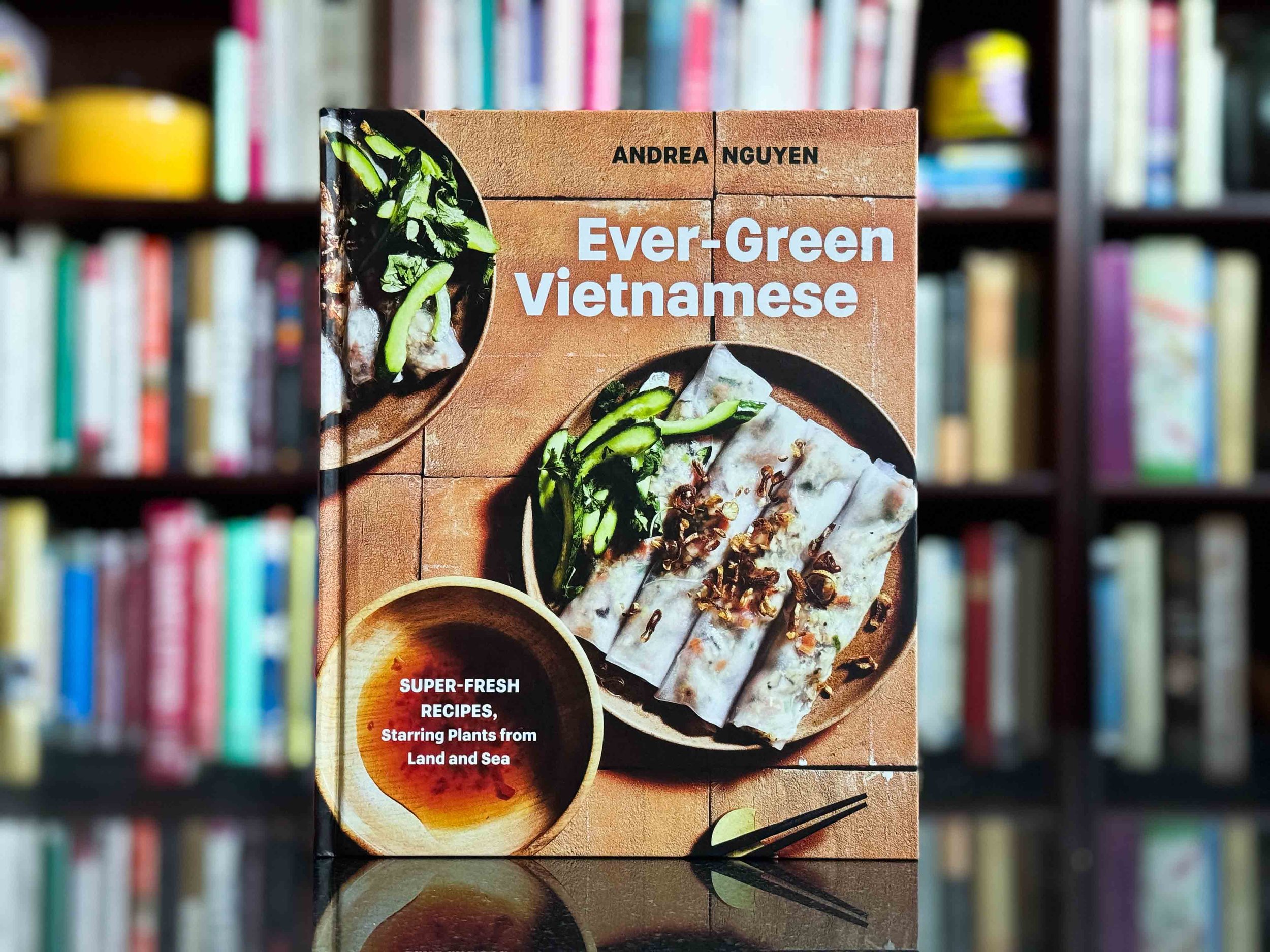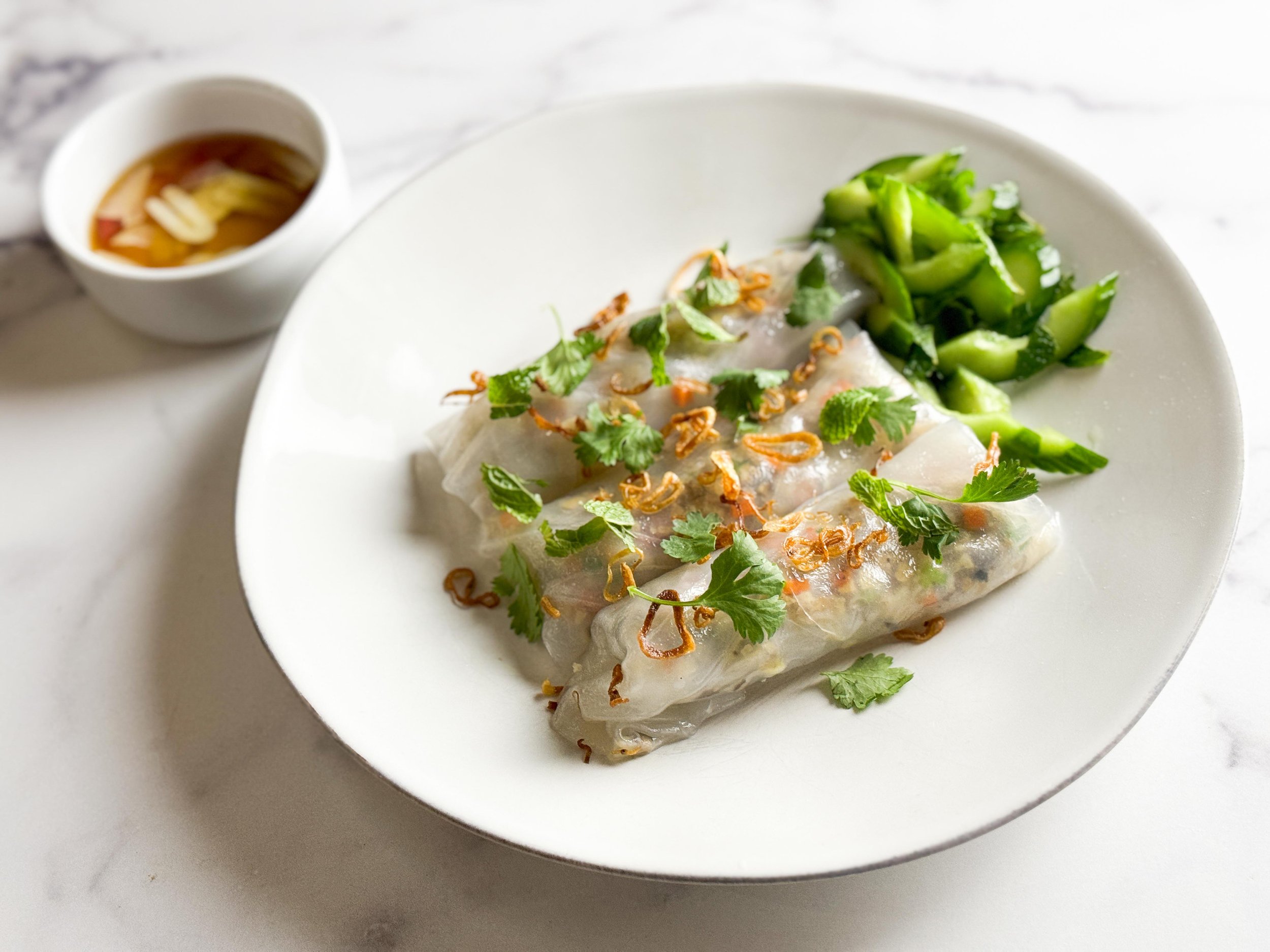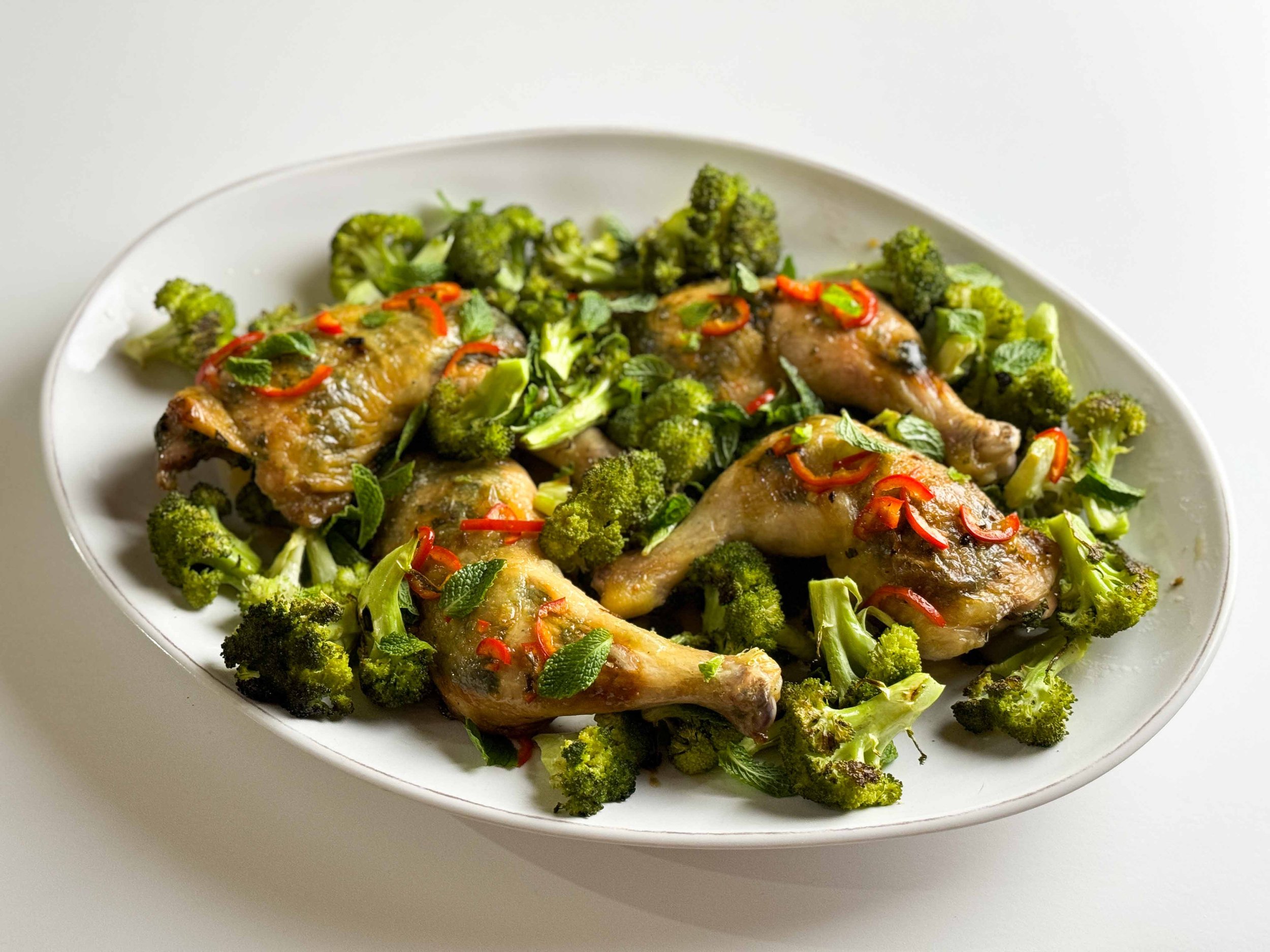By Leslie Brenner
Ever-Green Vietnamese: Super-Fresh Recipes, Starring Plants from Land and Sea, by Andrea Nguyen, PHOTOGRAPHS BY AUBRIE PICK, Ten Speed Press, 2023, $35.
Light, fresh, tangy and enticing: Doesn’t that sound like just what’s needed between the turkey, the latkes and the bûche de noël? Southeast Asian flavors are a natural antidote to richness, and Andrea Nguyen’s Ever-Green Vietnamese is a title we’re loving now — one we’ll keep turning to when January kicks us in the butt and healthy eating becomes a thing again.
Backgrounder
Nguyen is the preemient authority on Vietnamese cooking in the United States, and this is her seventh cookbook. Her ambitious debut volume, Into the Vietnamese Kitchen, broke ground when it was published in 2006, and it remains the best introduction to Vietnamese cooking in English on the market. Since then, Nguyen — who is also a cooking teacher, editor, the publisher of Viet World Kitchen and author of an outstanding Substack newsletter, Pass the Fish Sauce — has evolved into one of the U.S.’s best cookbook authors in any genre. In 2018 she won a James Beard Award for The Pho Cookbook, along with an IACP Cookbook Award for Unforgettable: The Bold Flavors of Paula Wolfert’s Renegade Life, which she edited.
Nguyen’s recipes work beautifully, she explains them clearly and thoroughly, and she’s a wonderful writer who’s brilliant at providing cultural context. She also has a great palate. Whether she’s offering up a traditional Vietnamese dish or something of her own creation, chances are excellent that it will be fabulous and you’ll be able to execute it beautifully in your own kitchen. We profiled Nguyen in 2021, and featured her (with the photographer An-My Lê, who is also Cooks Without Borders’ Vietnamese cooking advisor) in a live CWB video event.
Why We Love It
Ever-Green Vietnamese adopts a loose, omnivorous interpretation of “plant-based.” Following a health scare she had in 2019, Nguyen wanted to change her own eating habits, so she doubled down on vegetables and minimized her consumption of animal protein. The approach felt natural to her: Traditional Vietnamese cooking so strongly emphasizes plants. It uses meat largely as an accent, and relies on fish sauce for umami. A book was born.
The 125 recipes and variations in Ever-Green Vietnamese are vegetable-centric; some 100 (by Nguyen’s count) are vegetarian, and most of those are vegan. Importantly, for vegans, Nguyen offers a recipe for a fishless “fish” sauce — made with two kinds of seaweed, pineapple juice, salt, MSG or Asian mushroom seasoning and Marmite. That gives vegans access to recipes like the Bánh Cuốn Chay, the beautiful rice-paper rolls shown below.
The book’s omnivorously plant-centric vibe is one reason why we love it; that’s the CWB way as well. We also appreciate the excellent introductory material on ingredients, including the fact that Nguyen calls out her preferred brands. There’s a fantastic spread of Vietnamese herbs — keep a photo of it in your phone to help with shopping.
Vietnamese herbs explained in ‘Ever-Green Vietnamese.’ The book was photographed by the late Aubrie Pick.
Speaking of spreads, the book was gorgeously shot by Aubrie Pick, a talented, San Francisco-based lifestyle photographer who died of lymphoma at the age of 42 last month. Pick also photographed Nguyen’s Vietnamese Food Any Day.
Mostly, we love Ever-Green Vietnamese because everything we’ve made from it so far has been absolutely delicious.
Do Try This at Home
Bánh Cuốn Chay — Shiitake-Cauliflower Steamed Rice Rolls — prepared from a recipe in ‘Ever-Green Vietnamese’ by Andrea Nguyen
Bánh Cuốn Chay — Shiitake-Cauliflower Steamed Rice Rolls — are a case in point.
In her headnote, Nguyen calls this type of roll, bánh cuốn, “more delicate than Chinese cheung fan rice-noodle rolls.” They’re served either warm or at room temperature, topped with fried shallots and and eaten with nuoc cham — Vietnam’s ubiquitous dipping sauce — plus herbs, cucumber and blanched bean sprouts. These particular bánh cuốn are filled with a mixture of finely cut-then-cooked cauliflower, shiitake mushrooms, carrots and shallots. Spoon nuoc cham over them, scatter fresh herbs and fried shallots and pass more nuoc cham at the table.
Traditionally, cooking bánh cuốn wasn’t usually attempted at home, Nguyen explains. That’s because it involved the elaborate process of making rice sheets. Recently, though, clever cooks in Vietnam and elsewhere have figured out how to use easy-to-purchase rice paper (steamed rice sheets that have been dried), soaking them to rehydrate and roll, and then briefly steaming or microwaving them with excellent results. Nguyen includes instructions for both in her original recipe in the book. We tested it by steaming, so that’s what our adapted recipe reflects. The recipe is long nonetheless, but that’s because Nguyen holds your hand tightly every step of the way. Do it once, though, and the next time it’ll be easy.
RECIPE: Banh Cuon
Want something simpler?
Vietnam’s beloved dipping sauce also animates this easy weeknight number — Roast Chicken and Broccoli with Nuoc Cham Vinaigrette (Gà Rô Ti). A paste of garlic, shallots, cilantro and seasonings is rubbed on the chicken and stuffed under its skin, then you roast a sheet pan of that, along with a sheet pan of broccoli florets. Dress it all in a nuoc cham vinaigrette and finish with mint leaves and you’ve got a terrific dinner with little effort that deliciously satisfies cravings for umami-tang.
Five-Spice Mushroom-Walnut Pâté
Feeling a need for a mushroom pâté in my life, I had been developing a recipe for one in my head, and then boom — Nguyen beat me to the punch. So glad she did — hers is perfect, simple to achieve and can be made either vegetarian (with butter) or vegan (with canola or peanut oil). It’s perfect for setting out with drinks all through entertaining season.
RECIPE: Five-Spice Mushroom-Walnut Pâté
Try this Comforting Braise
This dish, Peppery Caramel Pork and Daikon (Thịt Heo Kho Củ Cải), is one Nguyen says she craves and prepares often — an example of what she calls “món ăn người nghèo (poor people’s food).
Caramel sauce for savory dishes is a cornerstone of Vietnamese cooking (along with nuoc cham and rice); it’s also technically a bit challenging, and needs to be made with care and attention. There’s a full recipe for the sauce early in the book, but Nguyen is all about practicality, and she offers a quickly made substitute within the recipe for the braised dish.
Mastering Vietnamese caramel sauce is definitely on my meters-long to-do list; meanwhile, I appreciate the workaround, and loved the resulting easy dish — which I served with brown rice.
RECIPE: Peppery Caramel Pork and Daikon (Thịt Heo Kho Củ Cải)
Ready To Dive in?
Try one or more of the recipes linked above. If you enjoy them as much as we do — or want a gift for someone who will — you’ll want to buy this outstanding book.
READ: More Cooks Without Borders cookbook reviews






